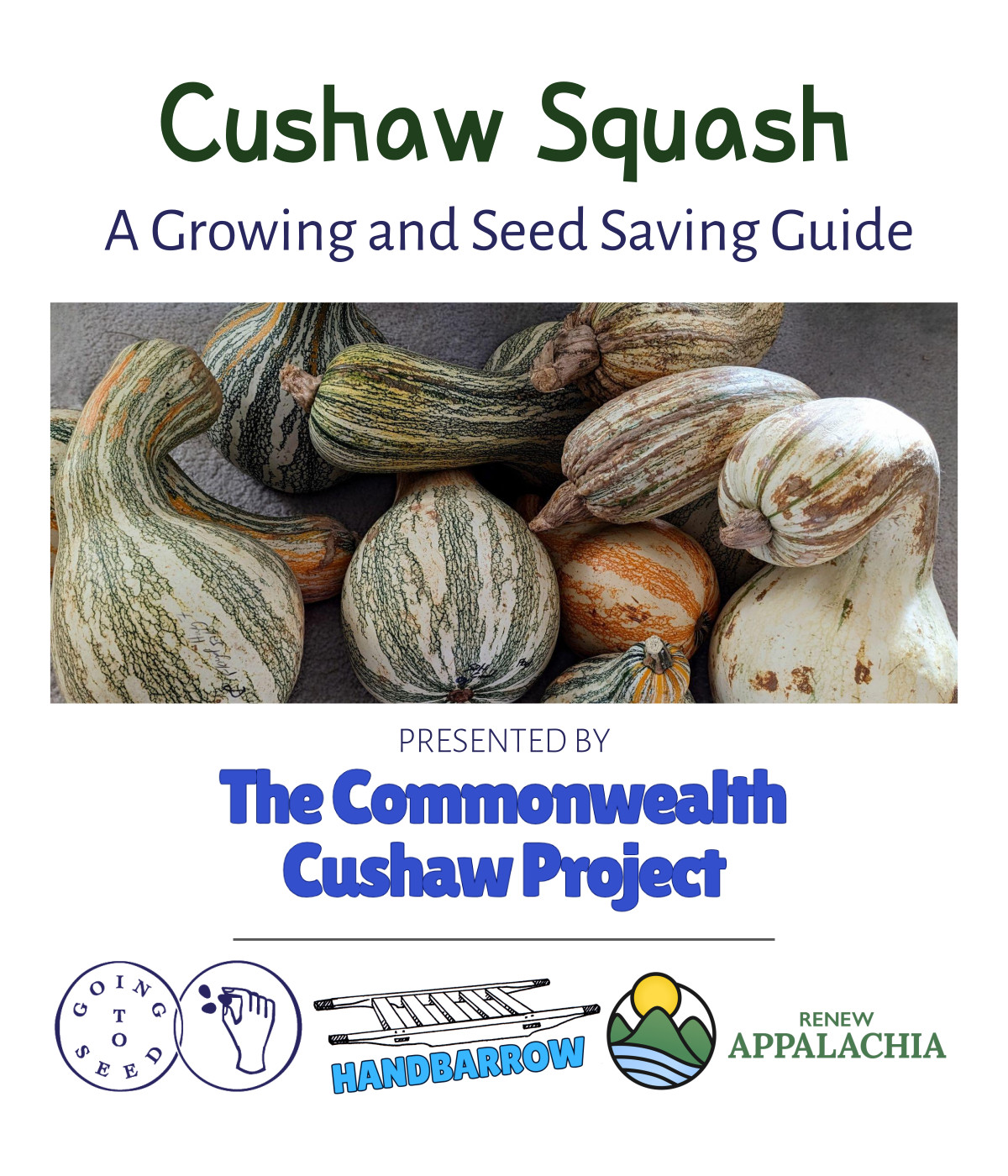The Commonwealth Cushaw Guide

This guide is intended to help people grow, use, and save seeds from tasty, nutritious cushaw squash. Some cushaws have been bred for tasty edible seed, and others for prolific summer squash or long-storing pumpkin characteristics. Many varieties of cushaw serve multiple roles.
Cushaws can often be grown with minimal irrigation or inputs like fertilizer, herbicide, or pesticide. This guide presents a low-input approach to cultivation. It also includes seed saving concepts and procedures that can be used to select and share seeds that become more adapted to your climate each season.
What are cushaws?
Cushaw, or kershaw, is the common name in English for the botanical species of squash Cucurbita argyrosperma. The cushaw was domesticated in Mexico and it has traditionally been grown in the approximate region from Nicaragua to the Southeastern United States. The Commonwealth Cushaw Project began in the mountains of Eastern Kentucky where cushaw squash has been an important winter “storage crop” since before memory.
Getting Started
The cushaw cultivation guide begins with Growing cushaws.
Zine version
An abridged version of this guide is available in printable zine format on the resources page.
Register as a grower
We request that cushaw growers who received seeds from this project and those who intend to contribute seeds register for occasional project updates. Please enter your address in the registration form.
About this project
It was developed by the Commonwealth Cushaw Project, a partnership of Handbarrow and Renew Appalachia in Kentucky, USA. The project receives technical assistance from Going to Seed. The Kentucky Rural-Urban Exchange and the Foundation for Innovation and Sustainability supported the development and publication of the guide.
Using and reusing the guide
Unless otherwise indicated, this guide is offered for reuse with a noncommercial creative commons license, CC BY 4.0. If you publish a revised version, please credit Going to Seed and Handbarrow, provide a link to the license, and indicate if changes were made. You may do so in any reasonable manner, but not in any way that suggests that Going to Seed or Handbarrow endorses you or your use.
